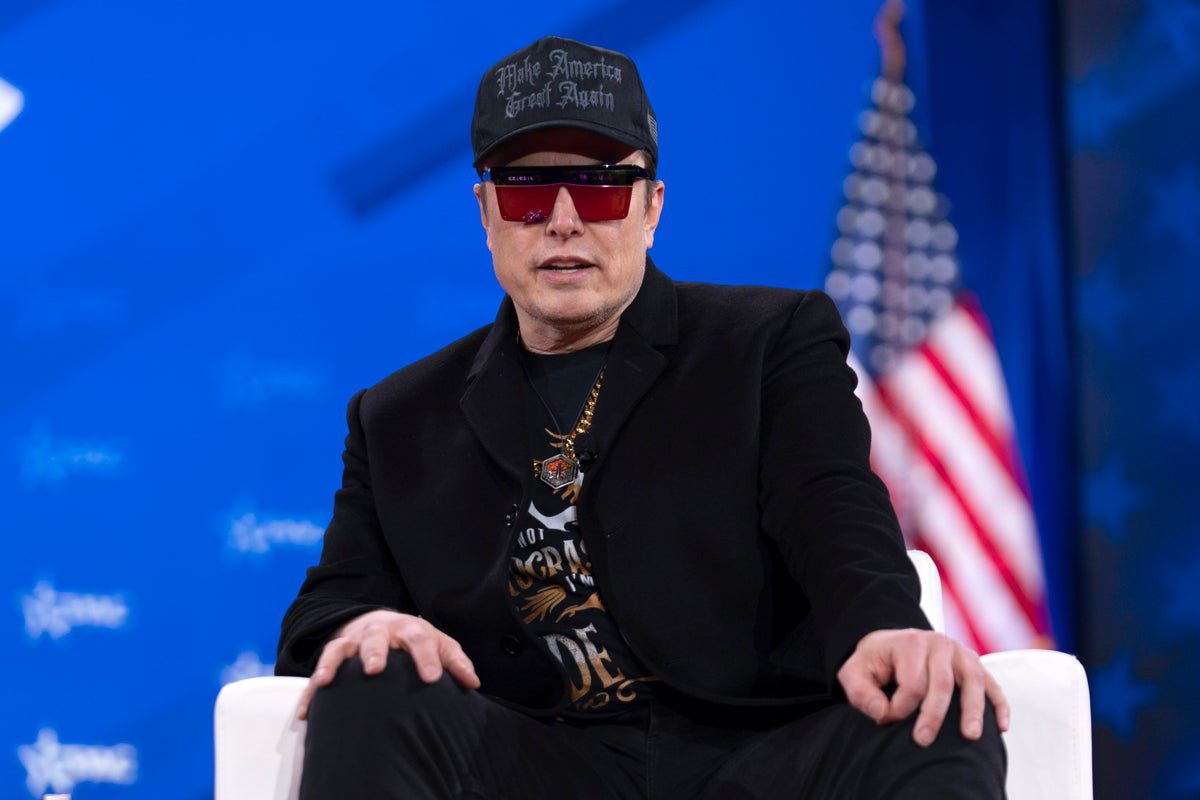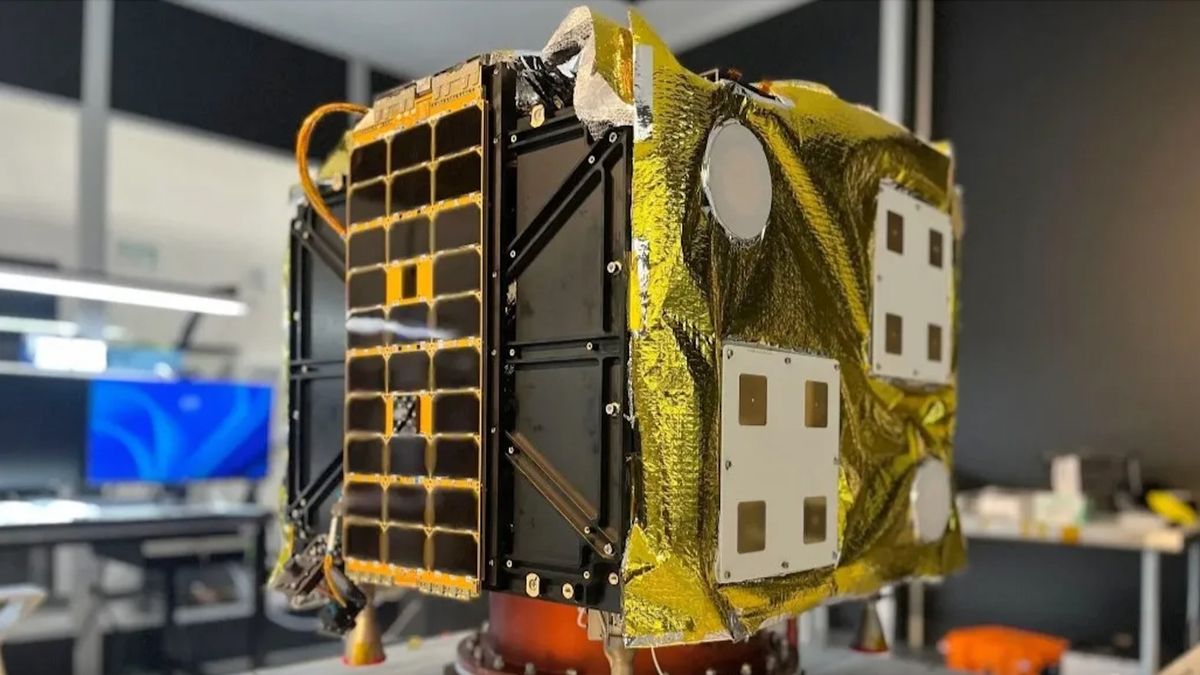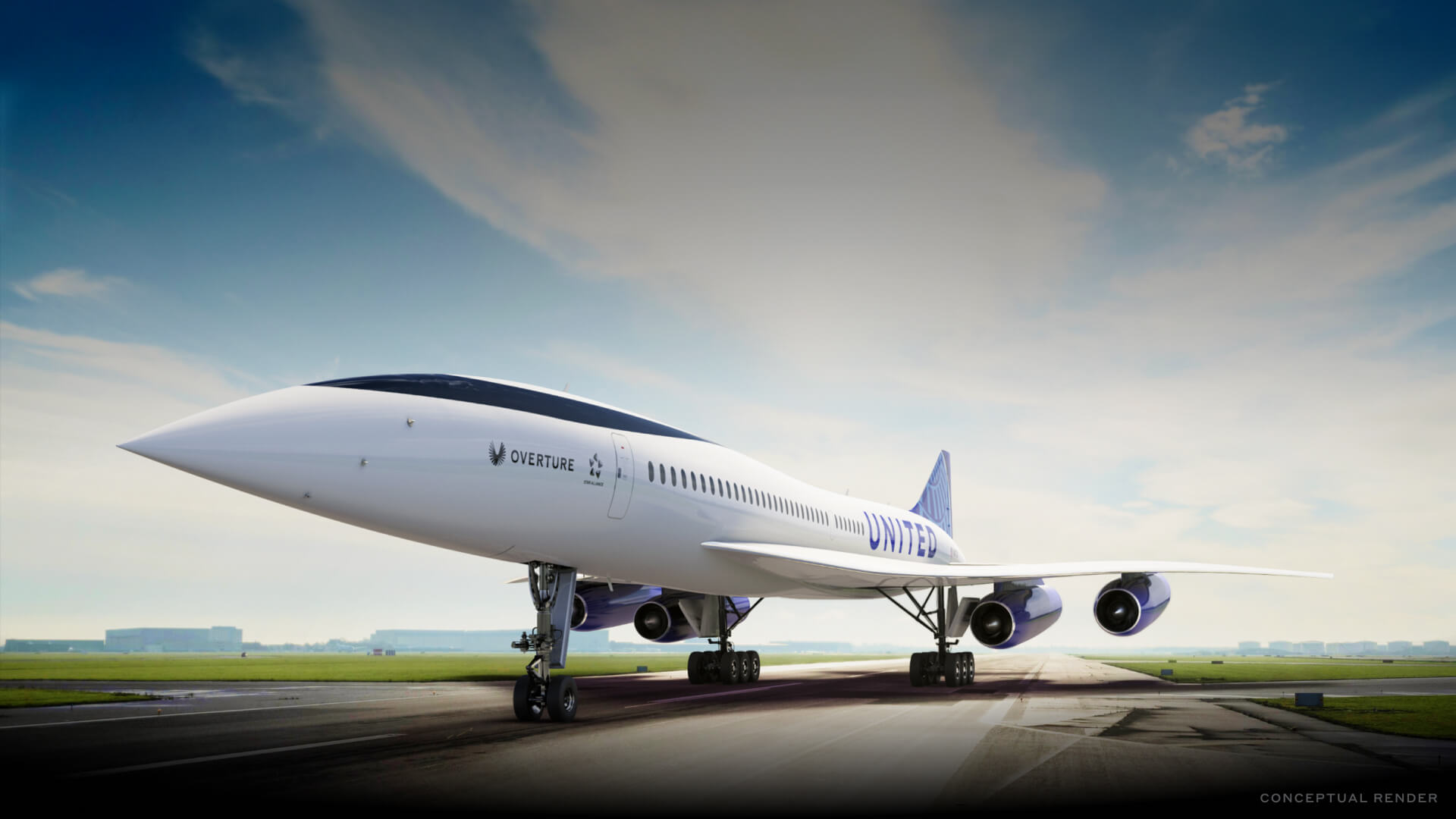
After a long hiatus since the Concorde’s operational days, efforts are now underway to revive supersonic passenger travel. The Concorde itself was never financially viable, and Boeing abandoned its government-funded supersonic transport (SST) project. Meanwhile, the Soviet-built Tupolev Tu-144, often referred to as Konkordski, experienced tragedy when it crashed during the 1973 Paris Air Show. Its design was alleged to have been based on allegedly stolen blueprints from French and American engineers—though it turns out those were fabricated documents.
Recently, Boom Supersonic secured $100 million in funding to advance their engine development, although actual costs for the engines are expected to soar far beyond this budget.
Just two weeks ago, Boom’s XB-1 test aircraft successfully broke the sound barrier. However, this jet is only about 30% the size of the envisioned passenger model, indicating that significant advancements are still needed before a commercial supersonic passenger jet can be certified and operational for airlines.
Technologically, there are no insurmountable barriers to achieving supersonic flight for passengers. Innovations suggest that future supersonic jets could be notably quieter and more fuel-efficient compared to the Concorde, which first took flight in March 1969.
Potential Changes Under the Trump Administration
Towards the end of the last Trump administration, the FAA proposed easing regulations on supersonic travel, which currently prohibit the operation of sonic boom aircraft. Elon Musk anticipates that these changes could come to fruition soon.
This administration will eliminate nonsensical regulations, including this one.
— Elon Musk (@elonmusk) February 10, 2025
Prediction markets are estimating a 27% chance for the legalization of supersonic travel in the coming year.
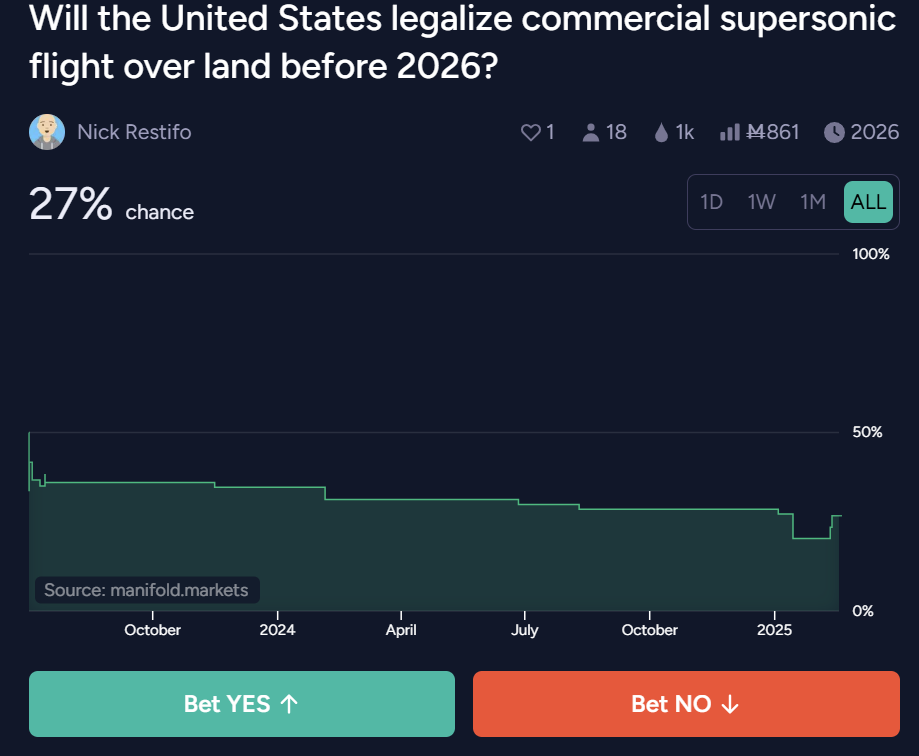
Meanwhile, Boom Supersonic claims they have developed a way to achieve supersonic speeds without the accompanying sonic boom reaching the ground.
Boom! We did it! We’re excited to unveil Boomless Cruise—supersonic flights that reach speeds up to 50% faster without generating an audible sonic boom.
This was demonstrated during XB-1’s initial supersonic flight—three times, in fact. pic.twitter.com/oe0VHJqNit
— Blake Scholl (@bscholl) February 10, 2025
Will Boom Supersonic Develop an Engine?
Developing engines can require investments in the billions, with individual units costing tens of millions. The recent funding of $100 million is insufficient to cover such extensive expenditures. To break even, a manufacturer would need to generate substantial sales. Without selling several hundred engines, recouping development costs becomes nearly impossible, making profitability a distant goal.
Boom’s decision to self-fund stems from a mix of market skepticism and doubts about the plane itself. The crux of the issue lies not in the feasibility of engineering but rather in whether the aircraft will entice airlines enough to secure bulk orders and actual deliveries.
Will Airlines Commit to Supersonic Aircraft?
Investor Paul Graham asserts that the economics of the new aircraft can support profitability by maximizing passenger capacity while maintaining current ticket prices.
If business travelers can choose between a 10-hour subsonic journey from Seattle to Tokyo or a 5-hour supersonic option at the same fare, they will naturally opt for the shorter trip, compelling airlines to embrace supersonic travel.
— Paul Graham (@paulg) January 29, 2025
Graham believes this will obligate airlines that operate long-haul premium service to consider acquisitions of supersonic jets.

Credit: Boom Supersonic
In 2021, United Airlines placed an order for Boom’s expected supersonic jets.
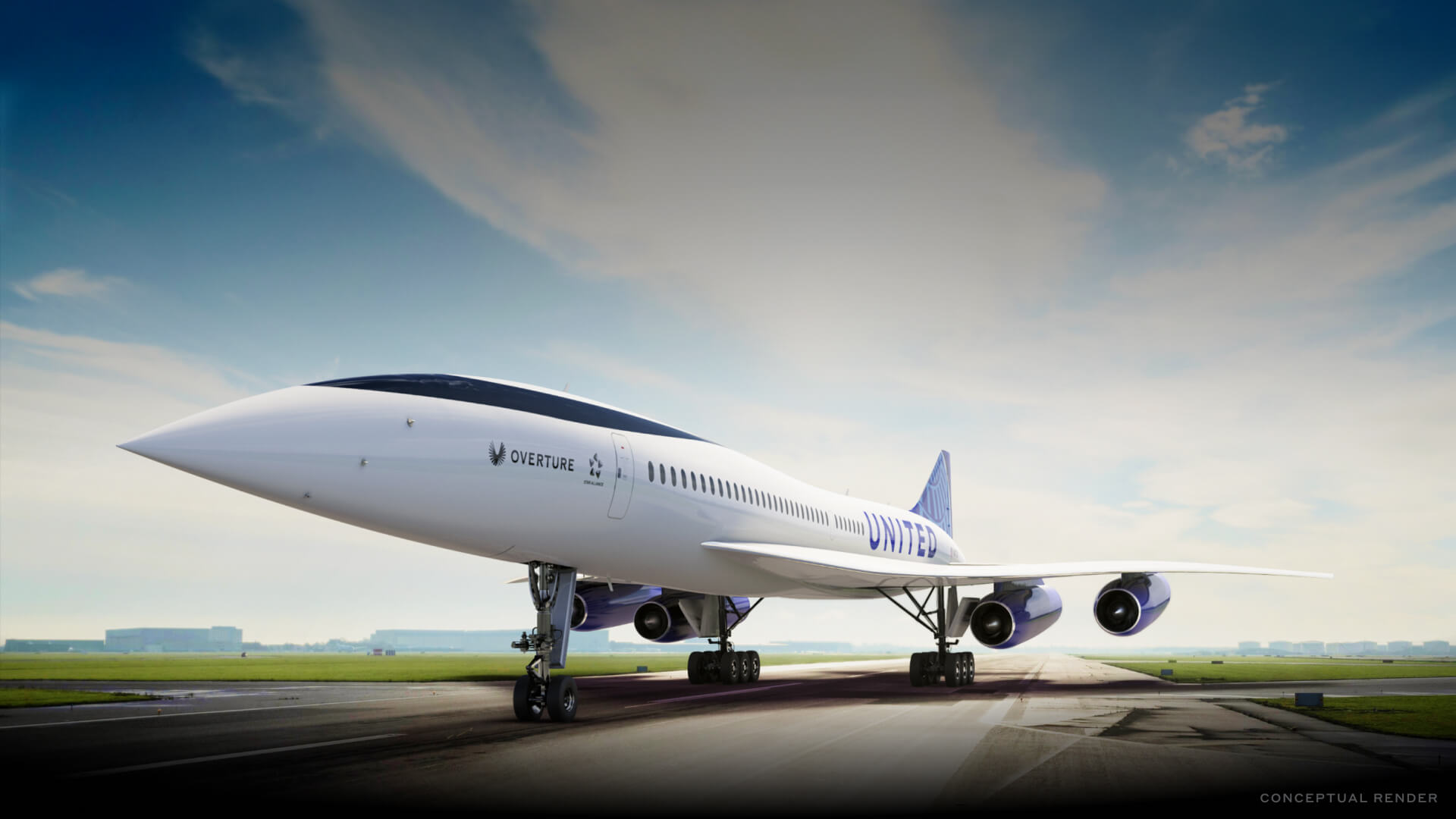
Credit: Boom Supersonic
In 2022, American Airlines made a similar order, and Japan Airlines has invested in the company, though these orders are still not guaranteed commitments.
Most people don’t realize that if Boom delivers an airliner, every international airline will have to purchase it or risk being relegated to budget status, flying tourists subsonically.
— Paul Graham (@paulg) January 29, 2025
- Not a single U.S. airline ever acquired a Concorde, although Pan Am, Continental, TWA, American Airlines, Eastern, United, and Braniff placed orders.
- International orders came from Qantas, Air India, Sabena, Air Canada, Lufthansa, and others that didn’t materialize.
- Only British Airways and Air France actually accepted deliveries of the aircraft.
- The sole committed order from Iran Air was cancelled following the Iranian revolution.
Interestingly, Braniff briefly operated Concordes for short segments between Dallas and Washington D.C. in collaboration with Air France and British Airways, requiring ownership of the aircraft for regulatory compliance.
During those operations, documents for U.S. regulations had to be stored in the cabin, and the aircraft’s registration numbers had to be switched each time it landed in the U.S.
Is Success Still Possible?
If the operational economics are compelling, supersonic travel could become a significant advantage in marketing. Routes connecting the East Coast to London, Paris, Frankfurt, and Zurich could potentially support a customer base willing to pay a premium for expedited travel, especially given the intense competition in this sector.
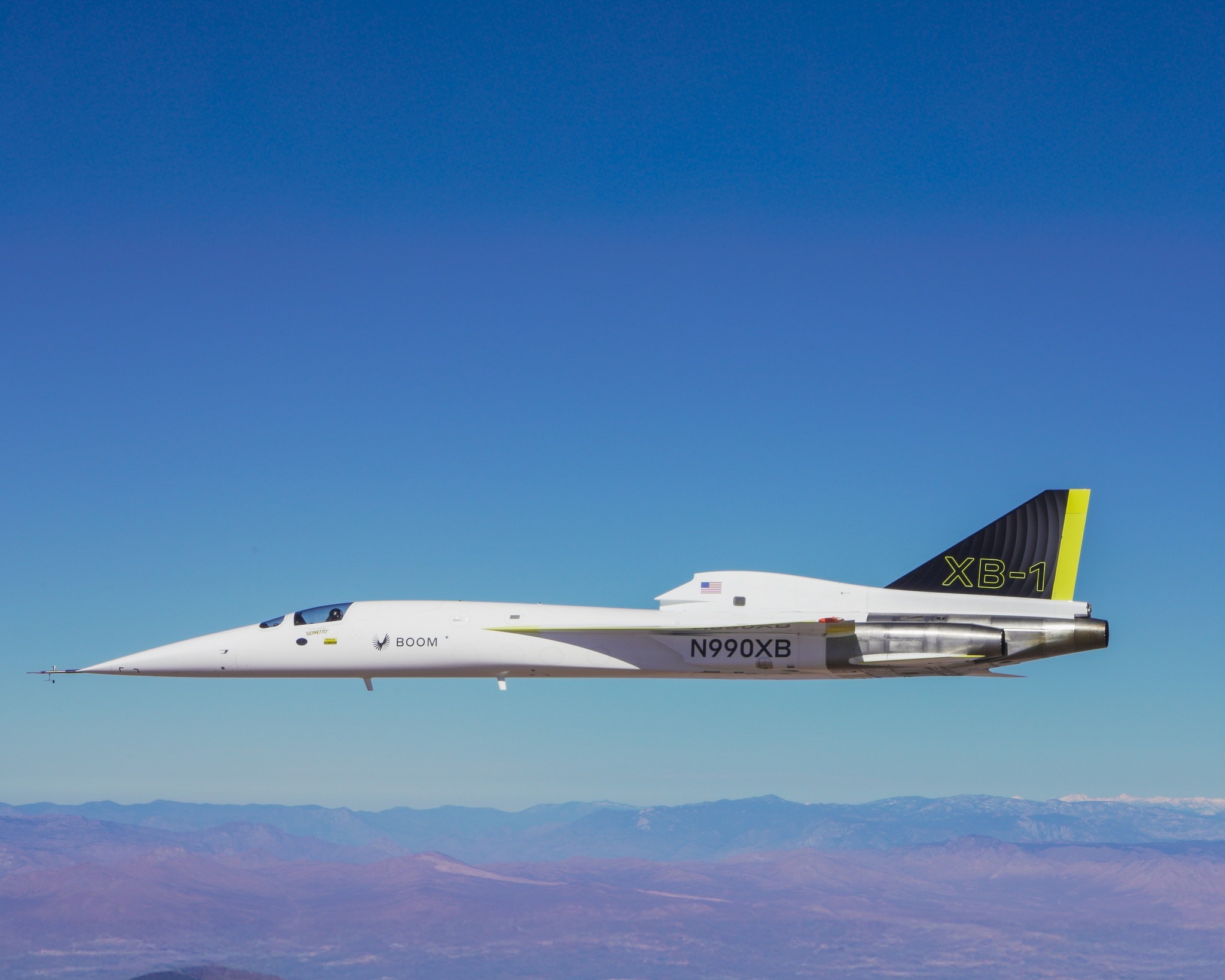
While shorter East Coast transatlantic flights may not present as much time savings as longer routes to Asia, they face less regulatory scrutiny and cover more land. Existing carriers may lobby to maintain the current status quo in order to avoid significant capital investments that others may also have to shoulder.
Nonetheless, direct flights to London and Paris enable travelers to depart in the morning and arrive in time for dinner, as well as supporting evening returns from Europe for families. The airlines best suited for successfully launching this venture are British Airways and American Airlines due to their advantageous slot allocations at London Heathrow and New York JFK, respectively. However, shorter flight time could complicate slot management.
Although some carriers have claimed that the transatlantic market is strong enough to capture even a small share of profits, the absence of robust customer engagement and unique value propositions has led to failures in the past, as seen with Eos and Maxjet.
Nevertheless, entering the supersonic arena could be a game-changer, particularly before competitors introduce similar offerings, transforming frequent flyer loyalty and credit card revenue streams.
I believe many business travelers would switch loyalty programs over a supersonic option, posing a significant threat given its limited number of transoceanic flights. This could be the first major product innovation in decades to disrupt that loyalty.
— Patrick McKenzie (@patio11) January 29, 2025
If regulations change to permit supersonic travel over land, while addressing noise concerns, we can anticipate technological advancements leading to commercial flights at accelerated speeds. While it remains uncertain whether Boom Supersonic will achieve these goals, the potential for supersonic passenger travel certainly exists—and necessary developments must occur to support its economics.
More From View from the Wing



